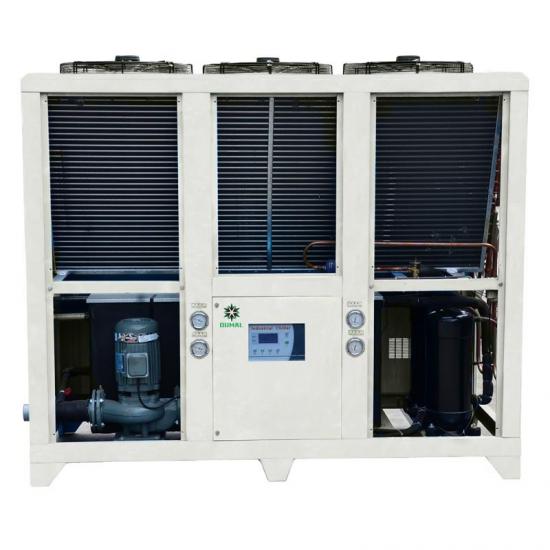Maintenance of an air-cooled chiller is essential to ensure efficient operation, longevity, and to prevent unexpected breakdowns. The following are key maintenance tasks required for an air-cooled chiller:
1. Regular Cleaning of Condenser Coils
Frequency: Monthly or as needed
Task: Clean the condenser coils to remove dirt, debris, and buildup that can reduce heat transfer efficiency.
Method: Use compressed air, a soft brush, or a commercial coil cleaner.
2. Checking Refrigerant Levels
Frequency: Monthly
Task: Ensure refrigerant levels are within the manufacturer's recommended range.
Method: Use gauges and other diagnostic tools to measure refrigerant pressures.
3. Inspecting Electrical Components
Frequency: Quarterly
Task: Inspect electrical connections, contactors, and wiring for signs of wear, corrosion, or damage.
Method: Tighten loose connections, replace damaged wires, and check for proper voltage and amperage.
4. Monitoring and Testing Controls
Frequency: Monthly
Task: Check the functionality of control systems, thermostats, and sensors.
Method: Verify that setpoints are accurate and that the system responds correctly to changes in temperature and load.
5. Lubricating Moving Parts
Frequency: Annually or as recommended by the manufacturer
Task: Lubricate bearings, motors, and other moving parts to reduce friction and wear.
Method: Use manufacturer-recommended lubricants and follow specified procedures.
6. Inspecting and Cleaning Air Filters
Frequency: Monthly
Task: Inspect air filters for dirt and replace or clean them as necessary.
Method: Follow the manufacturer's recommendations for filter maintenance.
7. Checking for Refrigerant Leaks
Frequency: Quarterly
Task: Inspect the system for signs of refrigerant leaks.
Method: Use leak detection tools and repair any leaks promptly to maintain system efficiency.
8. Evaluating Compressor Performance
Frequency: Annually
Task: Check the compressor for unusual noises, vibrations, or signs of wear.
Method: Perform diagnostic tests and replace or repair components as needed.
9. Inspecting and Maintaining Fans and Blades
Frequency: Quarterly
Task: Check fan blades for damage and clean them to ensure proper airflow.
Method: Tighten loose bolts and replace damaged blades.
10. Monitoring Water Quality (if applicable)
Frequency: Monthly
Task: For systems with water-cooled components, monitor and maintain water quality to prevent scale and corrosion.
Method: Use water treatment chemicals and regularly test water quality.
11. Verifying System Pressures and Temperatures
Frequency: Monthly
Task: Check system pressures and temperatures to ensure they are within normal operating ranges.
Method: Use gauges and sensors to monitor and adjust as necessary.
12. Reviewing System Performance
Frequency: Annually
Task: Conduct a comprehensive performance review to identify inefficiencies or areas for improvement.
Method: Analyze operational data, inspect all components, and perform a full system audit.
13. Updating Maintenance Records
Frequency: Ongoing
Task: Keep detailed records of all maintenance activities, including dates, findings, and actions taken.
Method: Use a logbook or digital maintenance management system.
OUMAL REFRIGERATION MACHINERY CO.,LTD.: We have been focusing on air-cooled chiller manufacturing for many years. We are a professional air-cooled chiller supplier, providing you with high-quality air-cooled chiller products with diversified products, such as 30 tons ~ 100 tons air-cooled chiller, 400 kW air-cooled chiller, 20HP air-cooled chiller, etc. Welcome to consult!

评论
发表评论